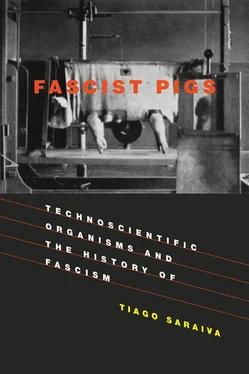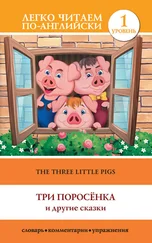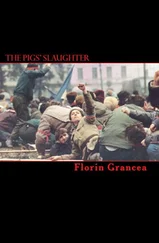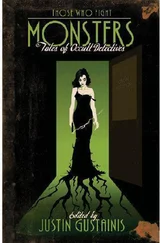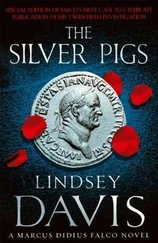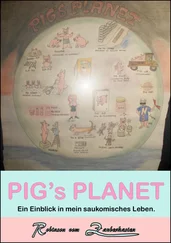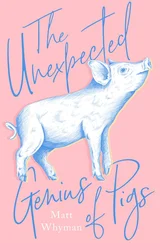Baur’s research on mutations, N. Vavilov’s theories of centers of origin, H. J. Muller’s induction of mutants, artificial duplication of chromosome constitutions by Blakeslee and Avery: [94]this was the canon mobilized by Câmara to demonstrate how genetics had powerfully changed plant-breeding perspectives. [95]And if he recognized that artificial induction of mutations since the end of the 1920s produced only lethal mutations of no practical value for plant breeders, he expected nevertheless, by working with x rays and temperature, to improve techniques of detecting mutants and develop tests to promptly select interesting mutants instead of just following an analysis of the phenotype of easily visible variations, as was then common. The main focus of Câmara’s research was on structural variations of chromosomes (trans-location, fragmentation, inversion, and so on). He used temperature and x rays, as well as centrifugation, as physical agents. At the Kaiser Wilhelm Institut für Biologie, research had been modernized by the application of new laboratory technologies to biological objects. Câmara used the same approach at the EAN. [96]
The EAN’s laboratories of genetics, cytology, entomology, and phytopathology stood in clear contrast with the laboratories of the Central Agricultural Station, its institutional predecessor. Câmara maintained that the use of multiple approaches to attack a single research problem was to be the distinctive hallmark of his institution. The Breeding department, for example, when hybridizing wheats to combine productivity, precocity, and cold resistance, had to work with the genetics department to determine the viability of fixing properties in crossings between varieties with different numbers of chromosomes. [97]And in the EAN’s departments, wheat, corn, rice, and apples were put under the scrutiny of genetics, physiology, botany, phytopathology, entomology, chemistry, and soil science, all supported by “technological chemistry, centrifugation, x rays, heating….” [98]Departments were thus sometimes arranged around scientific objects (for example, the pomology department for fruit trees), others (such as the phytopathology department) around a scientific discipline. [99]This was a curious mix of the organizational layout of the Kaiser Wilhelm Institut für Biologie, where departments followed disciplines, and the Kaiser Wilhelm Institute of Plant Breeding, where departments were divided according to functions of experimental organisms. [100]
In 1943, only seven years after its founding, the EAN already had 62 researchers. The EAN was the first research institution in Portugal to earn the status of National Laboratory, and Câmara felt compelled to expose its organic nature, echoing the organic corporatist state being put in place by Salazar: “[T]he organizer of an enterprise tries to elaborate its rules as precisely as he can, by establishing the number of organs needed, the way they relate to each other, the hierarchies between them, the performance expected from each of them.… The modern leader is the one who knows how to distribute his power by a system of intelligently divided responsibilities.” [101]
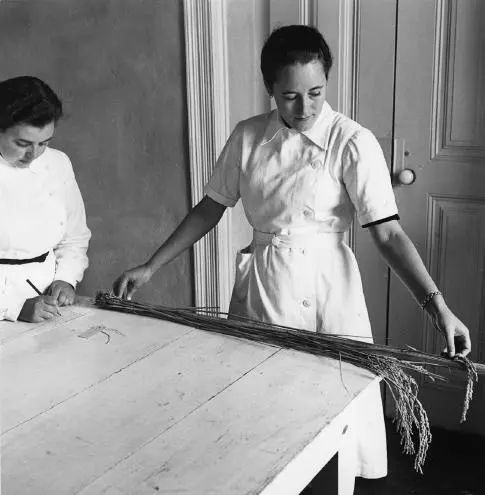
Figure 2.7 Artur Pastor, “Measuring Rice at the National Agricultural Experiment Station,” ca. 1950.
(Fundo Artur Pastor, Arquivo Municipal de Lisboa)
Câmara’s obsession with the organization of scientific work was the main subject of his book On the Way: Guiding a Scientific Enterprise , published in 1943. The book had a preface by Marcelo Caetano, a former member of Pequito Rebelo’s Integralist movement who from 1940 to 1944 was commissioner of the Portuguese Youth (Mocidade Portuguesa)—an organization inspired by the Italian Balilla but also by the Hitler Youth (Hitlerjugend)—and who would go on to lead the regime after Salazar’s fatal accident in 1968. Caetano recommended the book to every Portuguese who had been called “for a mission of leadership (chefia), of orientating, of directing national life.” [102]Câmara had produced a guide not only for the scientific researcher but also for every leader serving the New State—a guide for those abiding by what Germans called the Führerprinzip, a hierarchy of leaders. According to the text, every young man mobilized to the EAN should have “faith, patriotism, character, intelligence, knowledge and working capacities. Lack of faith leads to the sad petit bourgeois mentality of some supposed scientists…. Petit bourgeois lack the needed enthusiasm…. The religion of the fatherland is the eternal source of energies from where the researcher will get the courage to overcome all difficulties.” [103]
Câmara’s intentions were made manifest in the new facilities of the experiment station built in 1941 on Lisbon’s outskirts. The organic nature of the scientific work undertaken at his institution, always respecting hierarchies, justified his choice of a single building instead of the scattered pavilions characteristic of agricultural experiment stations. Câmara stated that one unique building “not only promotes a more intimate collaboration between the different departments, but the role of the director also becomes easier and more efficient. In such an establishment the authority of a director can’t be dismissed, and it should be felt at every moment and in each activity…. Order must be hard steel.” EAN researchers tinkered with life to sustain the alternative modernity of the fascist regime, and they themselves were expected to experience the scientific life as fascist life: radical nationalism as source of scientific inspiration; interdisciplinary research as organic structure; teamwork as military endeavor; scientific leadership as undisputed authority.
The exterior design of the building was historicist, as was characteristic of the regime: columns on the main facade, engravings in stone, solid walls, porched terraces, and a traditional overhanging tiled roof. [104]Practical considerations such as the dimensions, the location, and the illumination of the laboratories were, of course, also taken into account, but Câmara bluntly asserted that he wanted to avoid “the modern style and its juxtaposition of containers, with no character, poorly adapted to our climate and being in all its manifestations an outrage to the beauty of the Portuguese landscape.” [105]
And in fact, in the pages of Panorama , the official illustrated magazine of the National Propaganda Secretariat (Secretariado de Propaganda Nacional), the Experiment Station was publicized as one of the best expressions of the revival of national architecture, and was thus included as part of the Good Taste Campaign launched by the Secretariat aimed at educating the Portuguese people to live like Portuguese. [106]Interior designs, private houses, hotels, state buildings, literature, street decoration, and music all had to express the idea of Portugal as standardized by the Propaganda Secretariat, which was directed by the former futurist intellectual António Ferro. From his office, decorated with a photograph of Salazar and with modernist furniture, Ferro directed his propaganda campaign. Everything was rural, but a streamlined rural as if seen through futurist lenses. While architects normalized the historical elements that made a house Portuguese, ethnographers standardized regional dances and costumes defining Portuguese folk culture and poets transformed historical figures into Portuguese national myths. This image of the alleged eternal rural Portugal was exhaustively reproduced in films, books, exhibitions, the press, theater, and radio. [107]
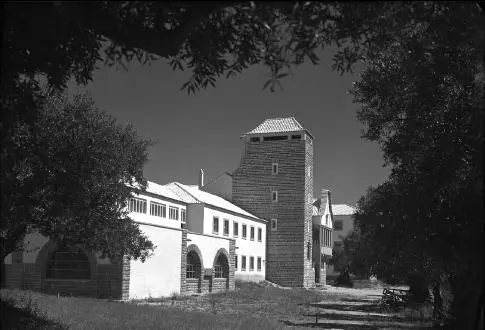
Figure 2.8 The National Agricultural Experiment Station, ca. 1940.
(Fundo Mário Novais, Art Library of the Calouste Gulbenkian Foundation)
The National Agricultural Experiment Station was a crucial element of this “futurism of the past.” [108]More than the architecture of its building, the institution reproduced fascist life at a scale even larger than the one of Ferro’s Propaganda Secretariat. The technoscientific organisms that came out of the station materialized that “futurism of the past” by sustaining and expanding large estates in Alentejo, by providing a basis for a campaign for bread self-sufficiency, by bringing together wheat fields and chemical industries, and by enabling the first corporatist structures of the New State.
Читать дальше
